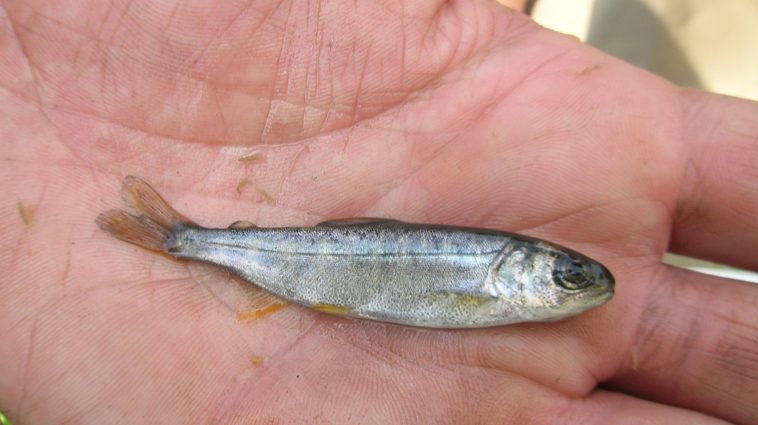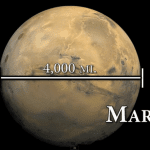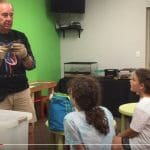[Originally published in 2014 as Salmon Seem to Inherit a Map for Their Migration]
Pacific salmon are fascinating to study because their lifecycle is so interesting.
They hatch in freshwater streams, at which point they are called alevin. Although they have hatched, they still have a yolk sac upon which they feed. Once they have absorbed the yolk sac, they are called fry and they begin feeding on the plankton in the stream. They eventually mature into parr, which are also called fingerlings. After about 12–18 months in freshwater, they move to the brackish waters of estuaries, ecosystems where freshwater rivers meet the ocean. At this point, they are usually called smolts. After a few months, they venture out into the ocean, where they will spend several years growing.
The amazing part, of course, is that after spending several years in the ocean, they return to the same freshwater stream where they hatched to spawn another generation.
From a scientific point of view, one of the most important questions you can ask about this lifecycle is, “After spending years in the ocean, how do the salmon know the way back to the freshwater stream in which they hatched?” It makes sense that while they are fry and parr, they get a good sense of the mix of chemicals that make up their “home stream,” but they obviously can’t follow that trail of chemicals from the ocean! So how do they get from the ocean to the correct estuary so that they can get back to the stream in which they hatched?
About a year ago, I discussed a study that gave a partial answer to that question. It showed that sockeye salmon use the earth’s magnetic field as a “map” that leads them to the proper estuary. The study suggested the salmon had other means of navigation at their disposal, but the magnetic field was a particularly important tool in the fish’s repertoire.
How do the salmon acquire this map? In the previous study, it was suggested that the map is imprinted in the salmon’s brain as it travels from the estuary to the open ocean.
Well, the same research team has done a follow-up study, and they have decided that this suggestion is probably not correct. Instead, the real story is more complex and much more interesting!
In this new study, Nathan Putman and his colleagues constructed a large platform that had copper wires laid out in a grid around its edge. By running currents through the wires, they were able to produce magnetic fields that were characteristic of the magnetic fields that Chinook salmon encounter while swimming in the ocean. They then put young salmon (parr) in five-gallon buckets on the platform.
They allowed the fish to acclimate to their buckets, and then they used the wires to produce a magnetic field that would be characteristic of what the salmon would encounter once they got to the ocean and reached the northern limit of their typical range. In the presence of that magnetic field, the parr preferentially oriented themselves in a southerly direction.
When they changed the magnetic field so it was characteristic of what the salmon would experience in the southern limit of their typical oceanic range, the parr preferentially oriented themselves in a northerly direction. In the presence of no magnetic field, they had no preference for their orientation. Of course, this provides even more evidence that the salmon use the earth’s magnetic field to navigate back to their home stream.
But remember, in the parr stage, the salmon have never been to the estuary. They have only been in their home stream. They must mature to the smolt stage before going to the estuary. So despite the fact that the fish had never seen the estuary or the ocean, they already knew how to use the magnetic fields in the ocean to guide them to the estuary! How is that possible? According to the authors:1
Even so, without the opportunity to learn gradients in magnetic intensity and inclination angle, the response to the change in magnetic field parameters must be inherited. It is particularly noteworthy that the fish tested were parr, the stream-dwelling juvenile stage. Thus, it appears that the fish possess orientation responses necessary for successful ocean navigation prior to even migrating toward the sea. (emphasis mine)
In other words, the fish inherit their magnetic maps from their parents!
Now the authors are quick to point out that this inherited map is probably just a “first draft” of the map they will use to later return home. As the fish mature in the estuary and venture out into the ocean, other environmental details are probably added to increase the accuracy of their navigational abilities. Nevertheless, the study provides strong evidence that the basics of salmon migration are not learned. They are inherited!
The more I learn about creation, the more I stand in awe of its Creator.
Reference
- Nathan F. Putman, Michelle M. Scanlan, Eric J. Billman, Joseph P. O’Neil, Ryan B. Couture, Thomas P. Quinn, Kenneth J. Lohmann, and David L.G. Noakes, “An Inherited Magnetic Map Guides Ocean Navigation in Juvenile Pacific Salmon,” Current Biology 24(4):446-450, 2014







